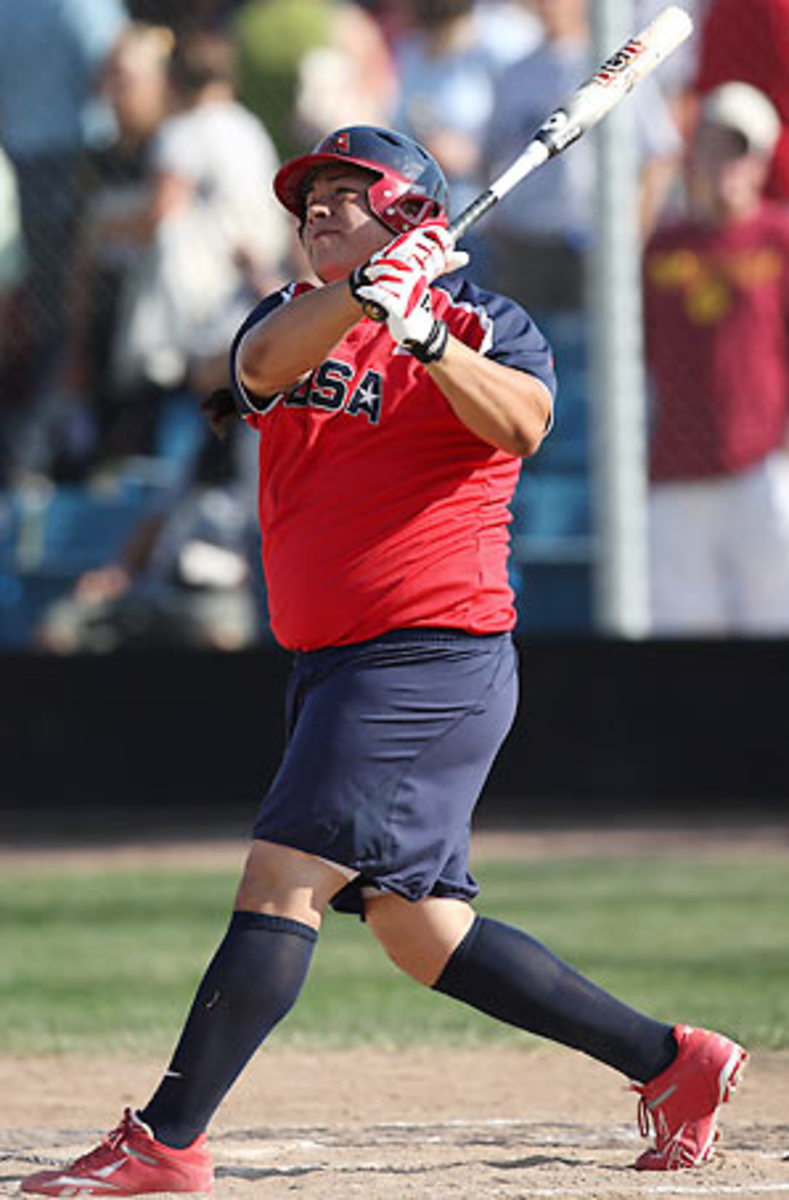Bustos leads with bat, heart


BEIJING -- They don't raise a championship banner or pass out rings to the defending champions on opening day of the Olympic softball tournament, a pity for the team that essentially is softball's version of the 1927 Yankees -- except, of course, for the ponytails. As you might recall the last time softball teams gathered under the five-ring big top in Athens, the Americans not only won this event, they trashed it, stripped it and left the smoldering remains on the side of the road.
Now having turned over one-third of the 15-player roster and sworn to the heavens that there is a growing parity in women's softball, they brushed aside Venezuela, the opening day equivalent of the Washington Nationals, on Tuesday with an 11-0 mercy-ruled five-inning rout that included a record number of runs, a combined no-hitter by Jennie Finch and Monica Abbot and a record-tying three home runs.
Maybe Venezuela will trade oil for runs?
Anyway, the most impressive home run of the too-predictable onslaught was hit by Crystl Bustos, who, (while the image of the 1927 Yankees is still fresh in your mind), is the Babe Ruth of softball, the most feared hitter in the game. If the Venezuelan outfielders had been playing any deeper at Fengtai Softball Field, they would have had to purchase bleacher seats. The homer wasn't far -- Bustos hit a rainbow at Baylor in the 2004 pre-Olympic tour that she swears they are still looking for -- but it was raked, a line drive that never rose more than 12 feet off the ground and rattled off a railing guarding the first row of seats in left center. When asked how long it took to exit the stadium, Bustos shot back, "I don't know. You tell me. I wasn't watching it."
Sometimes her home runs are gauged with a tape measure, sometimes with a stopwatch.
On a team where it seems blonde follows blonde in the lineup, the swarthy 5-foot-8 Bustos cuts a Falstaffian figure, a 30-year-old who has the rare ability to simultaneously convey gruffness and sensitivity, intimidation and empathy. The designated player is the Mother Bear of USA softball, making sure everybody is happy and everything is just right. Bustos does whatever it takes, from looming large in the middle of the lineup to helping the bus driver load the luggage.
"I can't put into words how much I think of her," said Finch, her roommate on the road. (Finch's roommate at home, minor-league pitcher Casey Daigle, was in bed in Rochester, N.Y., with their 2-year-old son, Ace, watching a game that started after 12:30 a.m. ET.) "She may look tough, and she's tough on the field, but her heart is as soft and big as it gets. She'd take a bullet for you."
"She's one of a kind," said shortstop Natasha Watley, an Ichiro-type slap hitter who also bombed a two-run homer to dead center Tuesday. "She's got this mantra that she's hard -- and she's very intimidating -- but she's always going to look after you."
Bustos looks after everybody, including children whose parents scuffle to pay the fees associated with sports. She is putting money where that say-it-like-she-thinks mouth is, finalizing a foundation that has been in the works since shortly after her stunning performance in Athens when she set Olympic records with five homers, 10 RBIs and a .923 slugging percentage. Based in Cincinnati and Los Angeles -- she hails from Canyon Country in Los Angeles County -- it helps defray costs for young softball players. Next year she hopes to expand it to soccer. "We go out and get sponsorships," she said. "It's an expensive sport, and we want to keep kids involved."
Bustos' philanthropy is informed by her own childhood. She grew up in a working-class family with two brothers and a sister, all of who were involved in athletics. She had one bat her entire childhood, an Easton aluminum model she took with her to Palm Beach Community College but had to discard because it no longer had any paint on it. "I see kids now who are constantly changing gloves and I'm like, 'You can have a glove a long time,'" she said. "We would take my glove, sew it up. You get attached to something. You don't want to see it go.
"I'm [helping children because of] a lot of the coaching I had. I had an uncle [her great-uncle, the late Jesse Rios] who drove 45 minutes a day to work with me. I had my travel ball coach pick me up, take me to tournaments, pay for my fees basically. It was $250 a year to play back then. That gets a little expensive when you got football for my brothers and softball for my sister."
So now Bustos gives back off the field and back, back, back on the field. The combination, like this softball team, is hard to beat.
